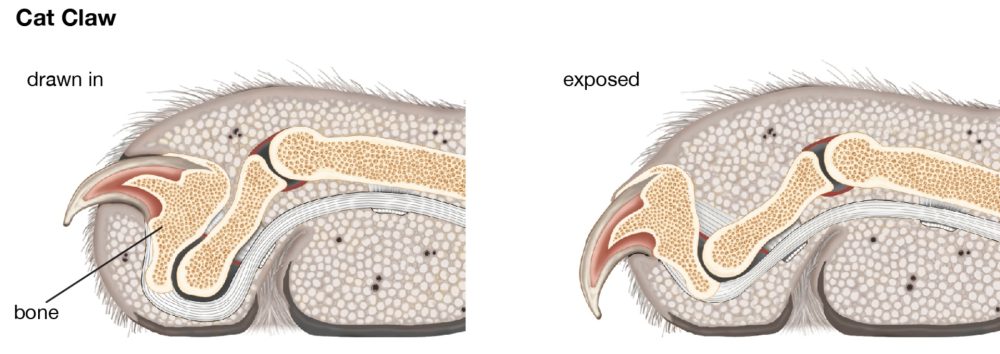I really want to sleep.
But instead, I will tell you why most modern gearts do not have three phalanges of fingers, as one might expect, but four.
In fact, the solution is quite simple, but usually no one really thinks about it. Let's take a look at the same cats and see how their paws are arranged. In short: they have two “working” phalanges in their fingers, and the third is curved at a slightly strange angle, and the claw is attached to it (image below). To release the claws, the cat simply bends the third phalanx separately from the rest of the finger - and voila! You can tear the hands of unwary owners.
Gearts' claws have not been retractable since time immemorial, and are simply attached to a fully functional third phalanx - like the nails of humans and the like, but longer and sharper. Convenient for climbing trees and scratching enemies, but a little interferes with various delicate work. Let's just say that you definitely won't play a guitar with such claws.
Therefore, somewhere in the tenth century, they began to carry out operations to retractabilize the claws - in this case, the shape of the third phalanx is magically somewhat modified, and an extended fourth phalanx with a claw is added to it. It's almost invisible behind the fur - but I don't have hair, so my fingers look strange at first glance, to say the least. But at least it’s convenient.
If anything, modification of the third phalanx does not affect the functionality of the fingers in any way if the operation is performed at an early age. Later, it takes a long time to get used to the new sensations and operating mechanism.

